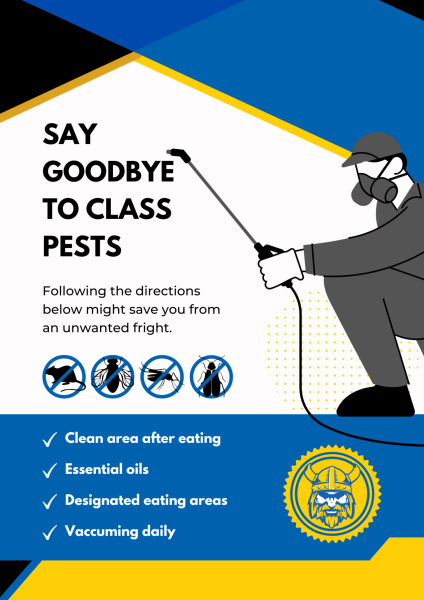
In the quirky world of schools, where students try to dodge homework like it is a ninja game, and teachers wield red pens with the power of medieval scribes, there exists a silent and persistent menace, pests. Yes, those tiny troublemakers that scamper around the hallways and seem to have enrolled in the School of Nuisance without anyone’s invitation.
The exact reason for these insect infestations is not completely clear but we can narrow it down. Well, it is not because schools are secretly hosting rodent raves or insect soirées. It is more about the irresistible allure of leftover lunch crumbs and the promise of uncharted territories in the backpacks of unsuspecting students. Imagine the tiny critters having a secret society meeting in the janitor’s closet, plotting their next invasion while nibbling on forgotten sandwiches.
The school cafeteria, or as pests fondly call it, the “All-You-Can-Eat Buffet,” is a primary culprit. It is like a food carnival every day, with trays of mystery meat and salads that have seen better days. If only pests could Yelp, they would rate the cafeteria as a five-star dining experience, complete with adventure-seeking cockroaches and cheese-loving mice.
Then there is the issue of students treating lockers like archaeological sites. You never know what ancient relics and half-eaten snacks are hidden within. It is a paradise for pests who consider these lockers their version of a treasure trove. Imagine a cockroach with a monocle and a top hat, declaring, “I say, old chap, I’ve discovered a stash of goldfish crackers from the early 21st century!”
Of course, let us not forget the classic “food-falling-asleep” phenomenon in classrooms. It is common for a stray potato chip to make a daring escape from a drowsy student’s grasp, only to be discovered later by a delighted group of ants who throw a miniature celebration in its honor. “The Great Chip Expedition of Room 330” becomes legendary in the ant world.
If you ever do see a critter, it is important to know that rodents can spread more than thirty-five diseases to humans, according to The United States Enviromental Protectant Agency.
Disease spread can be done through touching rodents, through contact with rodent feces, urine, or saliva; or through rodent bites; and indirectly, through ticks, mites or fleas that have fed on an infected critter.
Now, onto the solutions because even pests need to learn some manners. Primarily, schools should hire a Pest Whisperer – someone who can communicate with the pests and negotiate a truce. Picture a janitor with a magical wand, gently persuading the mice to relocate to a more suitable dwelling, like a cheese factory.
Pest control tech from Quality Pest Control Omaha, Stephen McCarthy, said, “The structure of the building can be the culprit of a lot of issues.”
According to McCarthy crack gaps and holes in the structure of a building is a welcoming invitation to all critters when it gets cold. And a building as old as North is bound to have many nooks and crannies.
“With a building as large as North, it might be one of those things where the company has to make multiple visits a week to check traps and replace bait.”
I propose the implementation of “Pest Etiquette” classes. Teach the pests proper manners, like not scurrying across the teacher’s desk during a pop quiz or refraining from buzzing loudly in the middle of a riveting history lesson. A graduation ceremony for the most well-behaved pests could be organized, complete with tiny diplomas and graduation caps for the critters.
The battle against school pests is a comedic saga of crumbs, lockers, and unexpected adventures.


